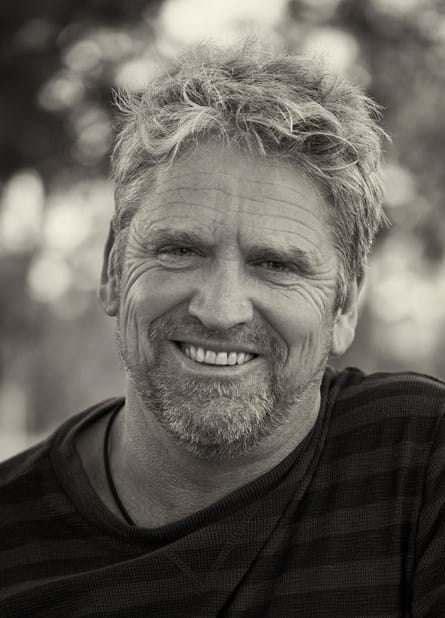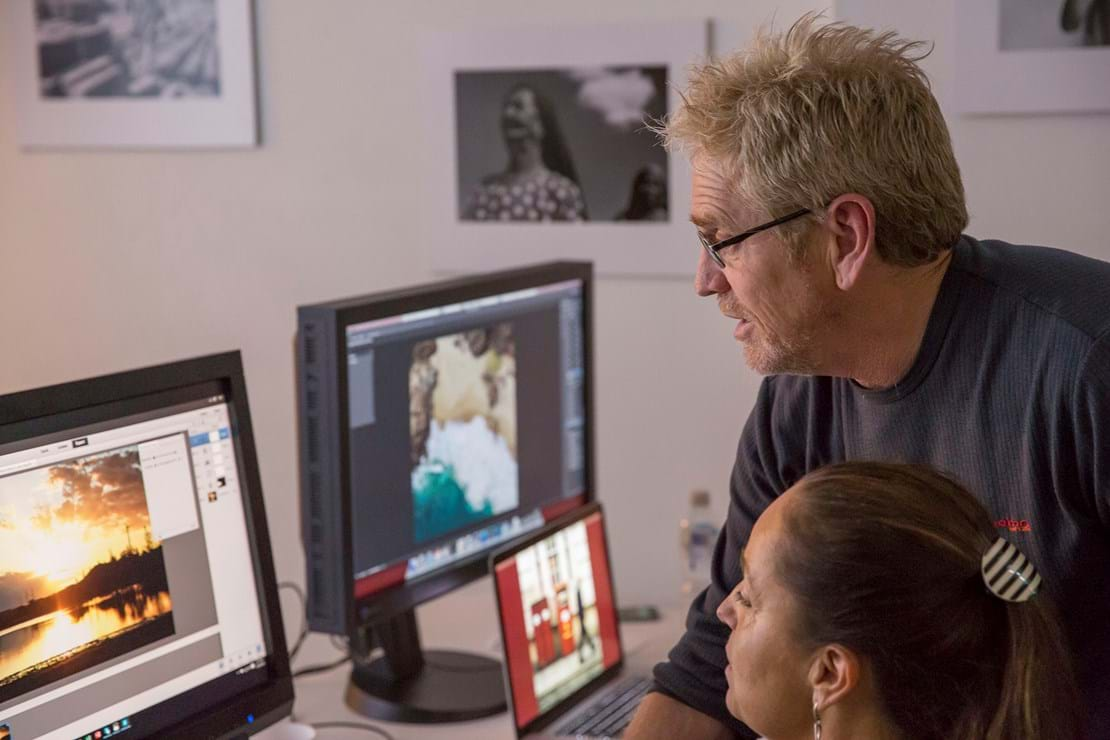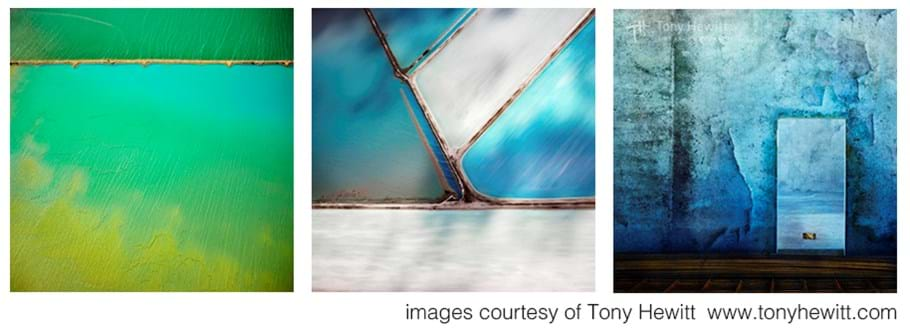International award-winning photographer Tony Hewitt, a perfectionist at heart, has stringent standards for his work and every piece of equipment he uses in his photographic workflow.
In this interview, we explore EIZO’s impact on Tony’s work, and how his trip to EIZO’s Japan headquarters helped shape his perception of the brand.
What was your first EIZO monitor, and what are you viewing now?
My first EIZO monitor was the FlexScan S1910, which I got about 15 years ago. It still works great, and I still use it as a secondary monitor.
I’m now using two ColorEdge models, and one FlexScan.
What prompted your switch to EIZO?
Moving from another brand, my immediate reaction was, “Wow!”
We were doing a lot of wedding photography back then. We’d have two photographs taken minutes apart, being checked on our monitors. Once edited & colour matched, we’d send them off to print. They would come back looking different!
Trying to figure out why, I played around with the two photographs that “looked the same” and swapped them between two monitors. They looked completely different! This was my first realisation about screen inconsistencies.
My hunt for a consistent monitor led me to EIZO. The FlexScan, considered a basic level monitor by EIZO, made a big difference.
How did it impact your work?
There were savings right away due to less wastage of consumables. We didn’t have the inconsistent prints returning from the lab that we had to reprint. There was no “going back to the drawing board”.
Not only did the monitor start paying for itself right away, I was becoming confident in what I was editing.
With my previous off-the-shelf monitors, if I was looking at a large image that spanned the screen, I would notice inconsistencies in the editing outcome from one side to the other. With EIZO I gained greater confidence, which led to efficiencies and productivity improvements.
How easy was it to set up your EIZOs?
EIZO just integrated perfectly with my existing workflow.
It’s literally as easy as A-B-C. Plug it in, calibrate, and you are ready to go!
If I got a brand new EIZO ColorEdge monitor at 5 pm, I can start a job and send it out by 7 pm with utmost confidence, knowing I’ve set it up right, calibrated it, and that I can count on it.
Self-calibration takes away a lot of the stress. It allows for greater consistency over a long period of time. I have set it up for automatic calibration weekly. The monitor is ready for work when I am.
In any workflow or system, the piece that gives the least amount of problems is the best. You almost forget that it is there! It is the world’s best monitor and does what it is supposed to do.
How important is your EIZO in your day to day work?
EIZO provides exceptional and realistic detail for my images constantly with regular (scheduled) calibrations. Like any high-performance vehicle, if you treat it with respect and look after it, it will return the favour in spades with consistency, year to year, without missing a beat.
Being a fine-art, commercial and portrait photographer, I depend on the monitor to deliver what I need it to do with total confidence.
How has EIZO’s after-sales service been?
Although I am now an EIZO Global Ambassador, I had been using the monitors way before that collaboration started. As with any product I represent, I only accept Ambassadorship if I’m using the product and I love it.
This extends to my relationship with the team that is behind the product. Fifteen years down the line, I have not had a single issue. So, the problem is, I’ve never had a reason to call anyone and complain!
I could not be happier since the day I purchased my first monitor.
Tell us about your visit to the EIZO Headquarters in Kanazawa, Japan
I experienced Japanese culture first hand at the EIZO factory. The people, the level of respect they show, I have not experienced anywhere else.
The Japanese are known for their passion and almost indefatigable pride in everything they do. I developed a deep appreciation for this when I was taken “behind the scenes” to observe their diligence, attention to detail and pursuit of perfection.
I am a perfectionist. Of the thousands of images I have captured, the few that make it to my website are ones I have spent a lot of time perfecting. The rest, while acceptable to others, don’t make the cut. I saw the same pursuit of perfection in how each EIZO monitor is checked by a person, every pixel. If there was a tiny flaw, it didn’t make the cut.
One of my endearing memories is being with Les Walkling in the EIZO boardroom with 15 or so designers, engineers and marketers. They absorbed every word as he explained some things that he wanted them to be aware of. Seeing that the people behind these monitors felt the same way about detail and perfection as I did, automatically embedded a “buy in” that they were a part of my own team.
I understood that the EIZO brand is built on a culture and a foundation that is very much in sync with how I have built my career. For a fine-art photographer, a professional who prides himself in producing the best work he can, they are the perfect partner. No holds barred.
During my many conversations about EIZO monitors, I end up reliving my experience in Japan. When people ask about other monitors I tell them, “I can’t talk about other monitors because I know nothing about them. I don’t even use them”. What I can tell you is, “I’ve been inside the factory, I’ve seen the people putting these things together, and I’ve never seen anybody with so much diligence, passion and pride to produce something so perfect. So, why would I even consider something else?”
That’s why I loved that trip. Of course, there is the culture and so many other elements to Japan which make it one of my favourite countries in the world.
EIZO is a passionate supporter of the continued professional development of upcoming photographers. What words of encouragement would you share with emerging Photographers and Videographers?
Each of us has a unique visual voice, a perspective of the world around us. Nobody sees things the way we do. We might recognise it as a feeling, a drive, a passion to express something that we see.
These skills help us understand how to choose and use the right tools to capture that vision in a way that will make us look at our digital image or physical piece and say, “That’s what I wanted to capture, and that’s exactly how I saw it”.
As a pure artist who wants to make their mark, you must listen to what is inside you and develop the skills to share that honestly, and as perfectly true to the way you felt about it as you can. That requires the right tools.
About Tony Hewitt
Tony Hewitt is an internationally recognized, multiple award-winning landscape photographer based in Perth.
He has explored the genres of Fine Art Photography, Landscape, Portrait, and Commercial and has exhibited both locally and internationally.
Tony is a ‘Grand Master of Photography’ and Honorary Fellow of the AIPP, and a Fellow of the NZIPP.





